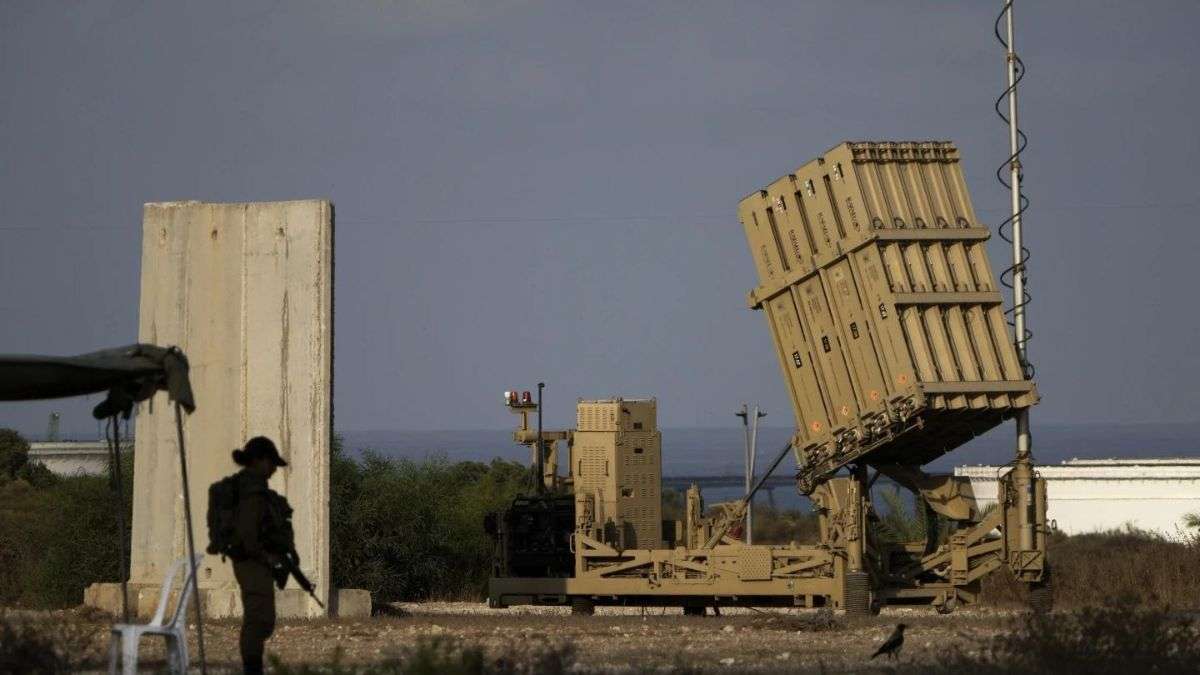
[ad_1]

Jerusalem: Whenever Israel faces missile attacks from Hamas, Lebanon or proxies fighting against Jerusalem, skies, especially at night, seems someone has started fireworks. But, in reality, it doesn’t possess the same magnificence as it looks during an attack on Israel. On Saturday, when Iran launched more than 300 drones and missiles at Israel, the sky turned glittery, thus saving millions of lives in Jerusalem.
According to the latest update, the Israeli military claimed about 99 per cent of explosive drones and missiles shot at their country, were intercepted. So, what saves Israel from such fatal attacks? The system is called “Iron Dome”.
What is an Iron Dome?
Iron Dome is basically a modern air defence system, that uses a sophisticated radar system to track inbound missiles that are then intercepted by Tamir missiles fired from multiple launchers attached to the radar system. The system can bring down rockets fired from a range of two to 40 miles away.
Developed by state-owned Rafael Advanced Defence Systems with US backing to counter rocket fire from Lebanon that hit Israeli towns during the 2006 war with Hezbollah, and from Palestinians in the Gaza Strip, where Hamas Islamists took control in 2007. It became operational in 2011. Since Israel activated the Iron Dome in 2011, the cutting-edge rocket defence system has intercepted thousands of rockets fired from the Gaza Strip.
The system has given residents a sense of security, and Israelis can often be seen watching the projectiles flying through the skies and destroying their targets overhead. But the current war with Gaza’s militant Hamas group might be its stiffest challenge yet. In just 12 hours, Iran has fired 300 rockets toward Israel, according to the Israeli military. But 99 per cent of them were intercepted.
How does the Iron Dome work?
The Iron Dome is a series of batteries that use radars to detect incoming short-range rockets and intercept them. Each battery has three or four launchers, 20 missiles, and radar, according to Raytheon, the US defence giant that co-produces the system with Israel’s Rafael Defense Systems. Once the radar detects a rocket, the system determines whether the rocket is headed toward a populated area.
If so, it launches a missile to intercept and destroy the rocket. If the system determines the rocket is headed to an open area or into the sea, it is allowed to land, thus conserving missiles. According to the military, all interceptions occur in Israeli airspace.
The military declined to comment on how many Iron Dome batteries are currently deployed. In 2021, Israel had 10 batteries scattered around the country, each able to defend a territory of 155 square kilometres, according to Raytheon.
The Iron Dome is part of a larger multi-layer air-defence system that includes the Arrow, which intercepts long-range ballistic missiles, and also David’s Sling, which intercepts medium-range missiles such as those believed to be possessed by Hezbollah in Lebanon.
Both systems, like the Iron Dome, were jointly developed with the United States. Israel is also developing a laser-based system called the Iron Beam that it says will be able to intercept rockets and other short-range threats at a fraction of the cost of the Iron Dome. Israel says that the system, developed with US funding, has not yet been deployed.
How accurate is the Iron Dome?
It is roughly 90% effective, according to Rafael. But it can get overwhelmed if a mass barrage of rockets is fired, allowing some to slip through.
While it has performed well so far, the risk could be raised if Hezbollah or Iran rages the war. According to media reports, Hezbollah, which gets weapons from Tehran, has an estimated 1,50,000 rockets and missiles.
How expensive is the Iron Dome?
Each missile costs an estimated $40,000 to $50,000 (Around Rs 40 lakh), according to the Institute for National Security Studies, a Tel Aviv think tank. The US has invested heavily in the system, helping with development costs and replenishing it during times of fighting.
In Washington, President Joe Biden, on Saturday, said US forces helped Israel down “nearly all” the drones and missiles and pledged to convene allies to develop a unified response.
(With inputs from agencies)
Also Read: Iran-Israel tensions: ‘US took down nearly all drones launched by Iranian forces’, says Biden
[ad_2]
Source link